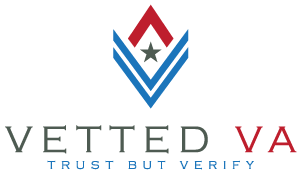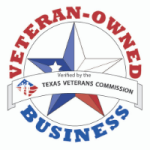The COVID-19 pandemic disrupted nearly every household in America. Businesses shut down, millions lost income, and many homeowners faced impossible financial choices.
If you’re a veteran with a VA-backed home loan, you were protected under the CARES Act, which provided options for mortgage forbearance — a temporary pause in payments for those facing hardship.
But after forbearance ended, a new question emerged:
Can I still use my VA loan benefit to buy or refinance a home?
The answer, thankfully, is yes.
On July 30, 2020, the U.S. Department of Veterans Affairs released clear guidance protecting your right to access your VA home loan entitlement, even if you went through COVID-19 forbearance.
Here’s what you need to know.
How the CARES Act Helped Veterans During COVID-19
The CARES Act (Public Law 116-136) was signed on March 27, 2020, offering homeowners with federally backed loans — including VA, FHA, USDA, Fannie Mae, and Freddie Mac — the right to request mortgage forbearance.
Under this law, borrowers could:
-
Request forbearance directly from their loan servicer.
-
Affirm that they were experiencing financial hardship due to COVID-19.
No proof was required, and the servicer was obligated to grant up to 180 days of forbearance, with the option to extend another 180 days.
This immediate relief kept millions of veterans in their homes — but it also left many uncertain about how forbearance might affect future VA loan approvals.
What the July 30, 2020 VA Guidance Means for You
The VA’s July 30, 2020 Circular (26-20-25) was designed to remove confusion and protect veterans’ access to homeownership benefits.
The circular stated that:
-
Veterans who experienced COVID-19-related financial hardship must not be denied a VA-guaranteed loan solely due to forbearance.
-
Lenders should use good judgment and flexibility when underwriting loans for veterans exiting forbearance.
-
Veterans can still purchase or refinance once their temporary hardship has been resolved and they demonstrate income stability.
This means your VA loan eligibility doesn’t vanish because of forbearance — you simply need to show that your finances have stabilized.
VA Flexibility on Purchase and Cash-Out Refinances
The VA directed lenders to continue offering purchase and cash-out refinance options to eligible veterans, even if they recently exited a forbearance.
Under this policy, lenders cannot automatically disqualify you just because you paused payments during COVID-19.
However, you’ll need to:
-
Explain the reason for the forbearance (e.g., job loss, furlough, medical hardship).
-
Provide documentation that the hardship has been resolved.
-
Show you’re able to make normal monthly payments moving forward.
“The VA did a really good job here,” said Scott Schang, Vetted VA professional. “They provided clear, flexible guidance that encourages and protects homeownership in the Veteran community.”
What Lenders Are Looking for After Forbearance
When evaluating your application, lenders will still follow VA’s core underwriting standards, focusing on:
-
Credit history and score
-
Residual income (how much is left after major expenses)
-
Debt-to-income (DTI) ratio
-
Assets and savings
The VA made it clear that forbearance alone is not a negative credit event. You will not be treated as a risky borrower solely because you paused payments.
VA: “We will not consider a Veteran an unsatisfactory credit risk solely because of receiving payment relief or forbearance during the COVID-19 national emergency.”
That said, any active debts still count in your DTI calculation.
Understanding Deferred Payments and Debt-to-Income Ratios
If you deferred payments on credit cards, auto loans, or other accounts, your lender must include those monthly payments when calculating your DTI ratio, even if the debt is in deferment.
This ensures an accurate assessment of your ability to handle new payments.
Example:
-
If your auto loan shows as deferred for three months, your lender still includes that monthly payment in your DTI.
-
You won’t be penalized for accepting deferral — but the obligation can’t be ignored.
The key takeaway: payment relief doesn’t erase the payment, it just postpones it.
Why Working With Experienced VA Professionals Matters
VA underwriting guidelines are intentionally flexible, but interpreting them correctly takes experience.
Not every lender or loan officer is comfortable with manual underwriting or complex scenarios involving forbearance or deferments.
That’s why Vetted VA exists — to connect veterans with experienced, credentialed professionals who understand VA policy and fight for your best outcome.
“A Veteran’s options are limited by the knowledge and willingness of their loan officer,” Schang noted. “Work with people who know how to use the VA’s flexibility — not fear it.”
You can find verified professionals through the Vetted VA Facebook community or on the official Vetted VA map.
Final Thoughts and Next Steps for Veterans
The VA’s pandemic-era guidance was more than a policy update — it was a reaffirmation of the VA’s mission to protect homeownership for those who’ve served.
If you experienced a temporary hardship but have recovered financially, you can still:
✅ Buy a new home using your VA entitlement.
✅ Refinance through a VA IRRRL or cash-out refinance.
✅ Rebuild credit without being penalized for responsible use of forbearance.
Take time to gather your documentation, confirm your income stability, and connect with a Vetted VA professional who understands the path forward.




